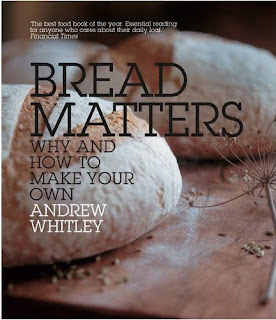Finally I made my own pain a l'ancienne...and I loved it! Everything was by the book and that made me very happy and proud of me. I understood all that things that bread makers say about the feeling of baking your own home made bread, especially the first ones. I watched it, touched, smelled, showed it to everybody and of course ate, but sharing with friends and family. All is gone by now and I think this is a good sign. Now I can't wait to bake more, have to have a little bit of patience or I will spend all my free time (and some of my work too) kneading, mixing and baking. I wouldn't mind thou ;-)
So the bread I decided to make today it was pain a l'ancienne, very interesting and I was looking forward because Lidia was telling lots of things about it: a primitive bread, not need to knead just mainly mix well to have a good consistency. But the long rest in the fridge over night it will bring loads and amazing flavors. Outside it is very crunchy and the inside soft with big alveolus.

Lidia posted here a recipe that she adapted from a spanish blog about bread called
madrid tiene miga (madrid has cramb) to used with sourdough instead of dried yeast. press
here to check the recipe in this blog, as it is the one I used for my bread. As I said before here in the blog, I had a small accident with my sourdough and I am now in the second day of making another.
So this is the recipe I used:
380g of organic strong white wheat flour (from
doves farm)
7g of salt
2.5g of dried yeast
300ml of iced cold water
I mixed the water with the water with 300g of flour using my scraper and leave it resting for 30 min as they said that the autolysis helps to work with the dough and you get a better result. After that time, I added the rest 80g of flour, the yeast and the salt, mix it well and leave it resting in the fridge for another 30 min, after that mixed it again with the scrapr and put it in the fridge all the night to slow the fermentation. This will make the bread more crunchy outside and with lauds of flavors (that's why we use iced cold water, to slow as much as possible the fermentation).
Next day, in my case 8 hours, I took the dough out of the fridge and brought it to work, so I left it outside for around 2.5 hours, so it doubled its size. I put the dough on a greaseproof paper and cut it with the scratcher in three part, giving them a baguette-ish size, not easy as the dough is very soft and you can really work with it. You have to put flour underneath and on top. I pre-heated the oven at 260ºC and put the doughs into it for 10 min at 250ºC and 20% of steam. I work in a restaurant and we have a good combi oven so you can play with temperatures and % of steam (from 10% to 100%) so I decided to try with 20%. After this 10 min I took out the steam and baked them for another 8 min with just 250ºC.
The result was a very good and crunchy breads, with bigs alveolus inside and an amazing flavor. Maybe the color was a little big dark for me, but it wasn't at all burn.

I can tell you that the bread is perfect for dipping, we ate most of them just dipping in olive oil. Perfect. Looking forward to bake more pain a l'ancienne, and use lidia's one with the sourdough.

One last thing. On july it was my birthday but as I spent 4 weeks working in dublin in a new restaurant opening I couldn't see some of my friends, so this weekend, Philippe, Gianmaria and Alessandro gave me a present: as they know I am baking bread now (and really enjoying it) they bought for me a book about breads and baking,
bread matters, by Andrew Whitley. I took a look to the book last night before I went to bed, it seems to be very interesting, as it is not only about baking, recipes and techniques but it has a big first part about why to bake your own bread and not to buy industrial ones; then of course it has a very good selection of all types of breads and recipes. Thanks guys, I appreciate and be sure I will use it and bake some bread for you.







